
In the intricate world of arachnids, non-venomous spiders have developed sophisticated communication systems that allow them to interact with members of their species despite lacking the vocal mechanisms found in many other animals. Unlike humans who primarily rely on verbal communication, spiders employ a fascinating array of signals—from elaborate web vibrations to visual displays and chemical messages—to share information about mating, territory, and potential dangers. These communication methods have evolved over millions of years, enabling these eight-legged creatures to create complex social structures and survival strategies without making a sound. Understanding these communication methods not only provides insight into spider behavior but also illuminates the remarkable diversity of information exchange throughout the animal kingdom.
Web Vibrations: The Spider’s Primary Language
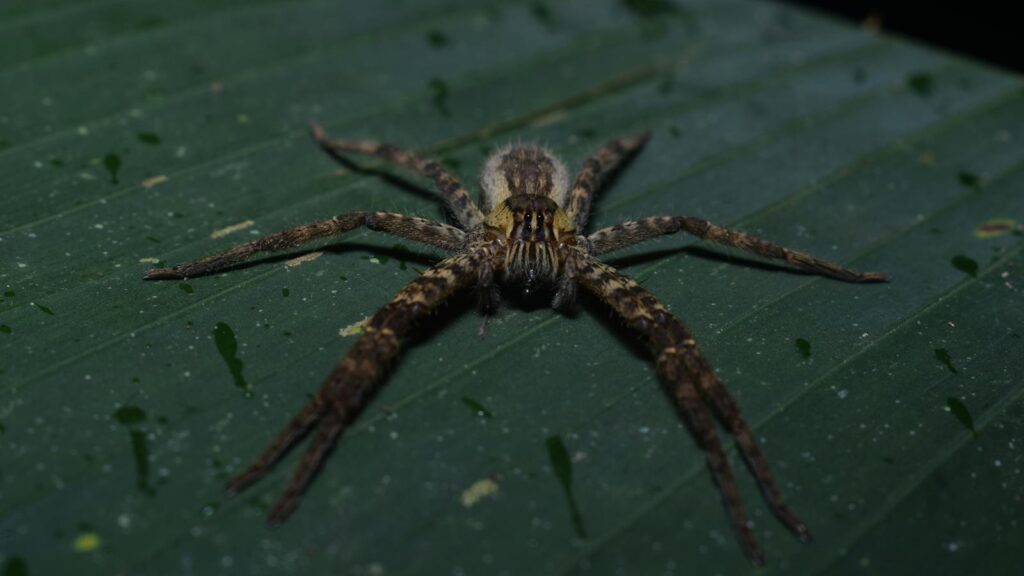
Web vibrations serve as the primary communication channel for many non-venomous spider species, functioning essentially as their version of speaking. When a spider moves on its web, it creates distinct vibration patterns that travel along the silk strands, conveying specific messages to other spiders. These vibrational communications can be incredibly nuanced, with different frequencies and patterns signaling distinct messages about food, danger, or mating opportunities. For example, male spiders often create specific rhythmic vibrations when approaching a female’s web, effectively announcing their presence and intentions without triggering her predatory response. Research has shown that spiders can distinguish between vibrations caused by potential mates, prey, predators, or even environmental factors like wind or rain, demonstrating remarkable sensitivity in this communication medium.
Silk Draglines as Message Boards
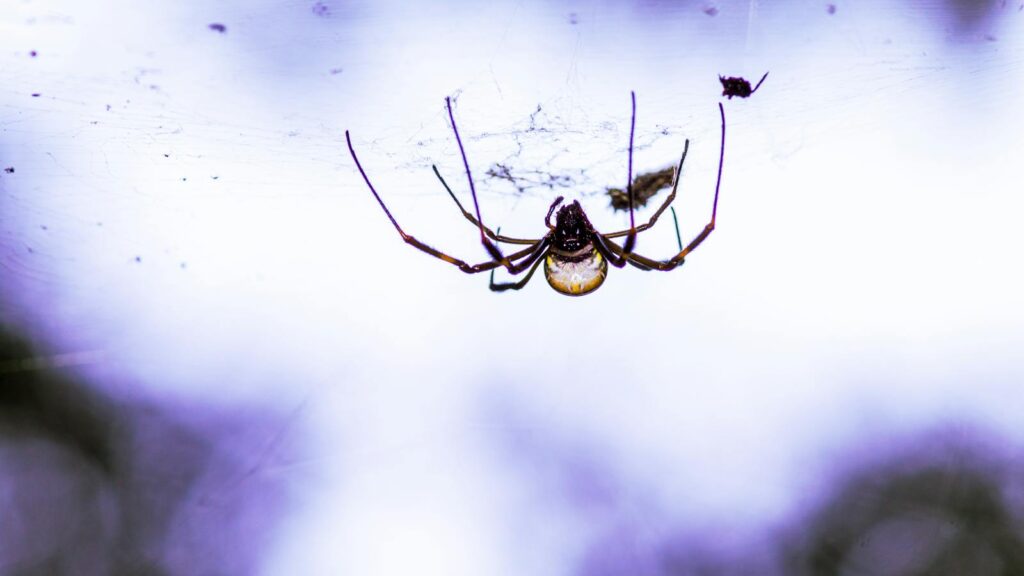
Non-venomous spiders employ silk draglines as communication infrastructure, creating what amounts to chemical message boards throughout their environment. As spiders move, they typically trail silk lines behind them that contain pheromones and other chemical compounds unique to the individual spider. These chemical signatures serve multiple communication purposes, from marking territory to attracting potential mates from considerable distances. Female spiders often leave particularly potent chemical signals on their draglines during mating seasons, which male spiders can detect and follow directly to the female’s location. The information encoded in these silk trails can be remarkably specific, containing details about the spider’s species, sex, age, reproductive status, and even when they last passed through the area, creating a time-stamped chemical record of their movements.
Visual Displays and Courtship Dances
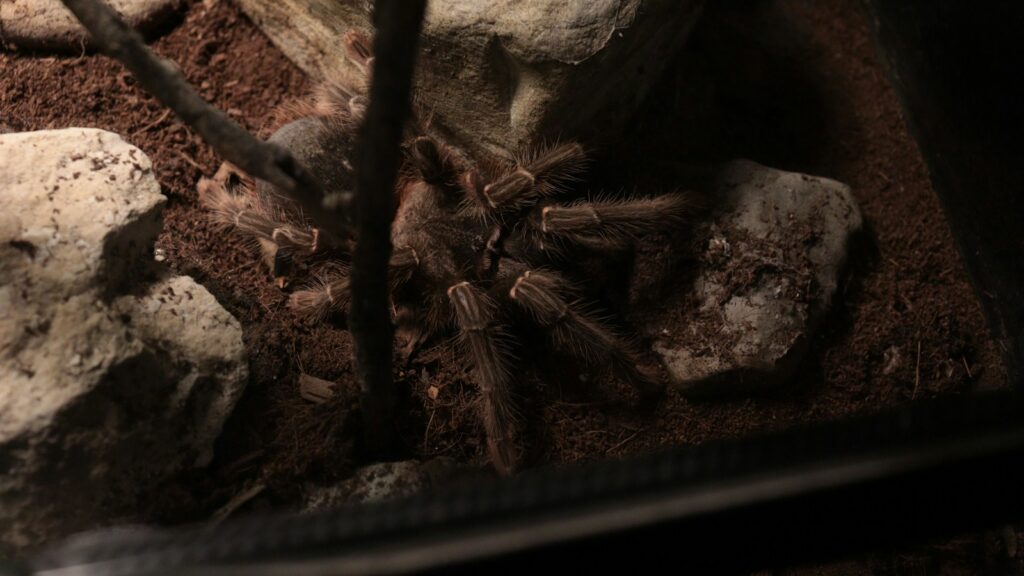
Many non-venomous spider species have evolved elaborate visual communication systems, particularly for courtship rituals where males perform intricate dances to attract females. These displays often involve specific leg movements, body postures, and sometimes even colorful body parts that are highlighted during the performance. The jumping spider family (Salticidae) provides some of the most spectacular examples, with males performing complex zigzag dances while waving specialized, often brightly colored appendages to catch the female’s attention. These visual signals must be precise and species-specific, as performing the wrong dance pattern could result in the male being mistaken for prey rather than a potential mate. The exceptional vision of jumping spiders—among the best in the spider world—has co-evolved with these visual communication displays, allowing for remarkable complexity in their silent conversations.
Stridulation: Making Sound Through Friction

While not technically “vocal,” some non-venomous spiders communicate through stridulation—the production of sound by rubbing specialized body parts together. This method creates vibrations that can travel through surfaces or air, functioning as another form of communication between individuals. Wolf spiders (Lycosidae) are known to use stridulation during courtship, with males rubbing specialized structures on their pedipalps (small appendages near the mouth) against textured parts of their legs to produce specific patterns of sound. These acoustic signals are often imperceptible to human ears but carry significant information to other spiders within range. The complexity of these sound patterns can vary between species, with some creating simple rhythmic pulses while others generate more elaborate sequences that can communicate detailed information about the signaler’s identity and intentions.
Chemical Communication Through Pheromones

Pheromone communication represents one of the most sophisticated systems in the spider world, allowing them to broadcast information chemically across considerable distances. These specialized chemical compounds, secreted from various glands throughout the spider’s body, create invisible scent trails and markers that other spiders can detect with sensory organs on their legs and pedipalps. Female spiders often release sex pheromones when ready to mate, creating a chemical signal that male spiders can detect from remarkable distances—sometimes hundreds of meters away in certain species. Beyond mating, spiders use pheromones to mark territory boundaries, signal aggression toward competitors, and even coordinate behaviors in the few social spider species that live in colonies. The chemical composition of these pheromones is often species-specific, ensuring that messages reach only their intended recipients in environments where many different spider species might coexist.
Tactile Communication Through Touch

Direct physical contact serves as another important communication channel for non-venomous spiders, particularly in social contexts or during mating. When spiders encounter each other directly, they often engage in a complex exchange of tactile signals using their legs and pedipalps to tap, stroke, or grasp each other in specific patterns. These touch-based communications can convey critical information about identity, intentions, and receptiveness to interaction, particularly in potentially dangerous encounters between males and females during courtship. In social spider species like Anelosimus eximius, tactile communication becomes even more important for maintaining colony cohesion, with individuals frequently touching and grooming each other to reinforce social bonds. The sensitivity of spiders to these tactile signals is remarkable, with their legs containing thousands of sensory hairs that can detect even the slightest touches and vibrations from other individuals.
Web Decorations as Visual Signals
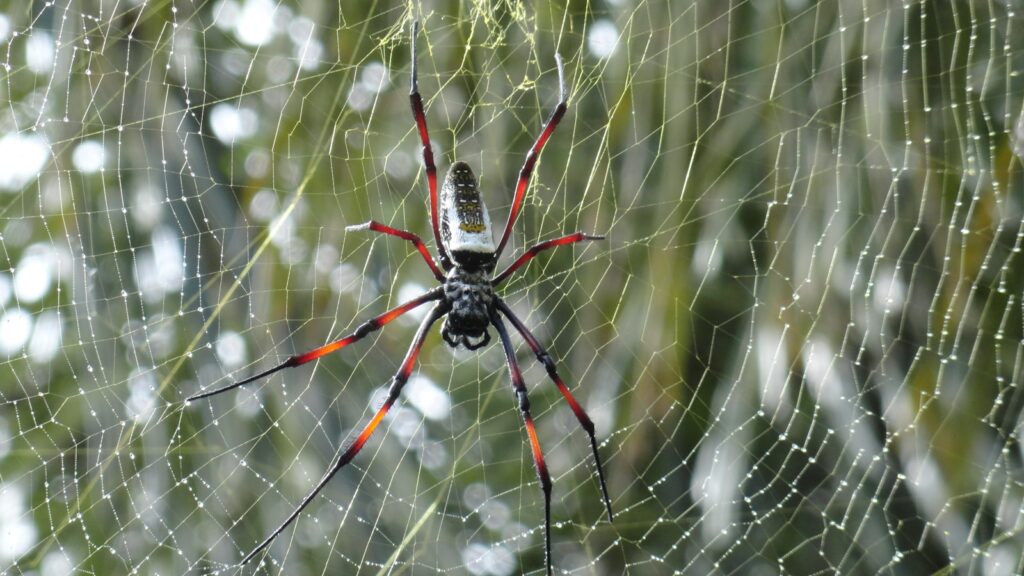
Some orb-weaving spiders create distinctive patterns in their webs, known as stabilimenta, which serve multiple communication functions beyond simply strengthening the web structure. These silk decorations—often appearing as zigzag patterns, spirals, or silk tufts—can advertise the web’s presence to potential mates or warn birds and large insects to avoid colliding with the otherwise nearly invisible trap. Species like Argiope aurantia (the black and yellow garden spider) create particularly elaborate stabilimenta that reflect ultraviolet light, making them visible to many insects and birds while potentially serving as a visual calling card to other spiders. Research suggests these decorations may also function as a form of identity signaling, allowing spiders to recognize their own webs versus those constructed by others in the vicinity. The specific patterns can vary significantly between species and even between individuals, potentially conveying information about the web-builder’s size, condition, or territorial boundaries.
Synchronized Group Behaviors in Social Species

While most spiders lead solitary lives, the relatively few social spider species demonstrate remarkable coordination through specialized communication systems that synchronize group behaviors. In colonies of social spiders like Anelosimus eximius or Stegodyphus dumicola, individuals use a combination of web vibrations and chemical signals to coordinate hunting, web maintenance, and defensive responses. When prey becomes entangled in their communal web, these spiders can sense the specific vibration pattern and respond collectively, with dozens or even hundreds of individuals moving simultaneously to subdue larger prey than any single spider could handle. This synchronized response requires sophisticated communication to coordinate the timing and distribution of spiders during the attack. Research has shown that these colonies can even communicate information about prey size and type through different vibration patterns, allowing them to mobilize appropriate numbers of colony members based on the hunting opportunity.
Territorial Communication and Boundary Marking
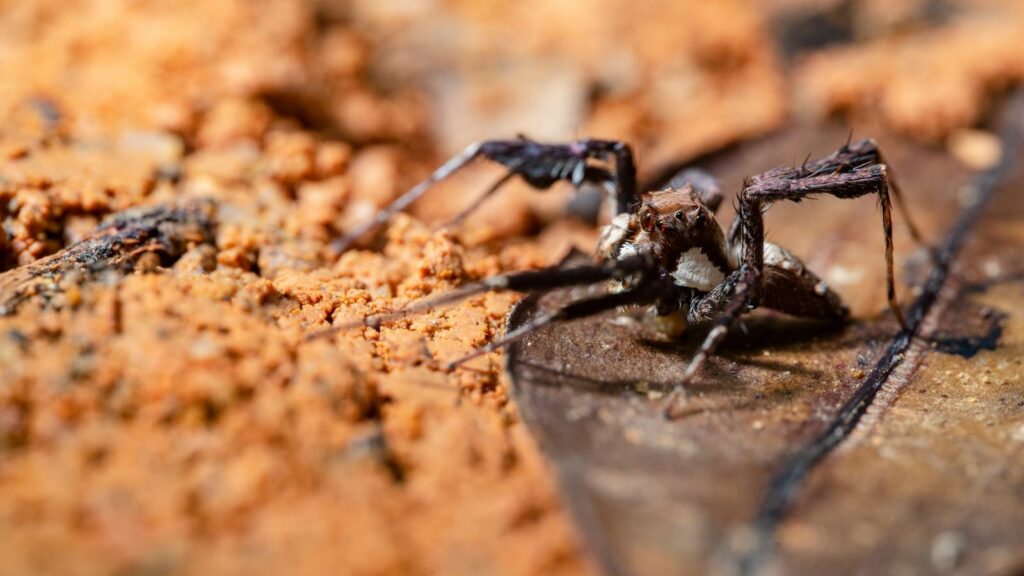
Non-venomous spiders employ multiple communication methods to establish and defend territories from potential competitors and intruders. Many web-building species incorporate specific chemical signals into their silk that serve as territorial markers, essentially creating a scented boundary that warns other spiders to keep their distance. When territorial disputes do occur, spiders often engage in ritualized communication displays that involve specific threat postures, leg movements, and web vibrations that communicate their claim to the area without necessarily escalating to physical combat. In some species like the funnel web spider Agelenopsis aperta, males perform specific vibration patterns at the edges of a female’s territory to request entry permission, with the female’s response determining whether they’re accepted or driven away. These territorial communication systems help reduce potentially costly physical confrontations while still allowing spiders to maintain exclusive access to prime hunting or web-building locations.
Alarm Signals and Danger Communication
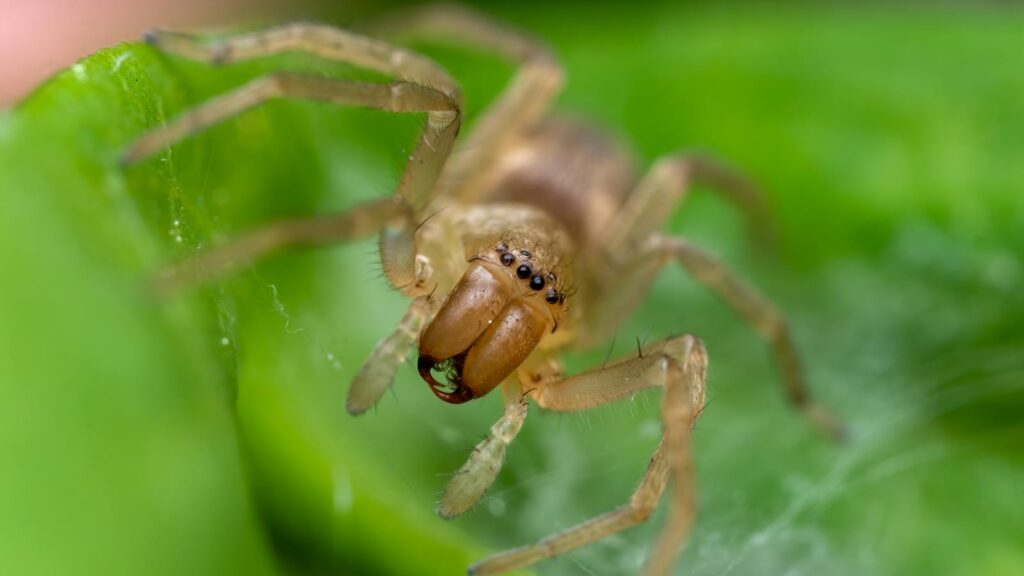
When facing threats, non-venomous spiders have evolved communication systems to warn others of their species about potential dangers in the environment. In social spider colonies, individuals that detect a predator or disturbance will create specific vibrational patterns by rapidly shaking the web, which alerts other colony members to either prepare for defense or retreat to safety. Some species also release alarm pheromones when injured or threatened, creating chemical warning signals that can persist in the environment and inform other spiders of potential danger zones long after the initial threat has passed. Research with colonial species has shown that these alarm communications can be remarkably specific, with different vibrational patterns or chemical signals corresponding to different types of threats—from insect predators to larger vertebrates or environmental disturbances. The widespread adoption of these warning systems highlights their evolutionary importance for species survival, particularly in vulnerable colony situations where communication efficiency directly impacts group safety.
Communication Differences Between Species
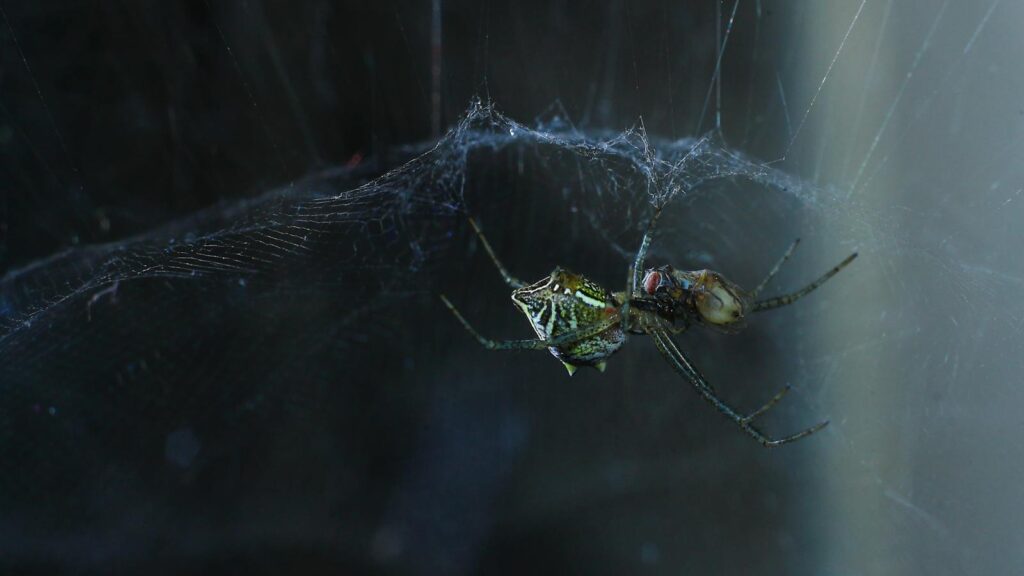
The communication methods employed by non-venomous spiders show remarkable diversity across different families and species, reflecting their varied ecological niches and evolutionary histories. Web-building spiders like orb weavers rely heavily on vibrational signals traveling through their silk structures, while ground-dwelling hunters like wolf spiders depend more on visual displays and chemical trails. The jumping spider family demonstrates some of the most complex visual communication systems, corresponding with their exceptional eyesight, while sheet web builders have specialized in detecting subtle vibrational differences through their web structures. These communication differences extend to the sensory equipment each species possesses—orb weavers have specialized organs in their legs that detect web vibrations with extraordinary sensitivity, while jumping spiders have evolved enlarged eyes that can perceive fine details of movement and color during courtship displays. These species-specific communication adaptations highlight how communication methods have evolved to match each spider’s lifestyle, hunting strategy, and environmental conditions.
Experimental Research on Spider Communication
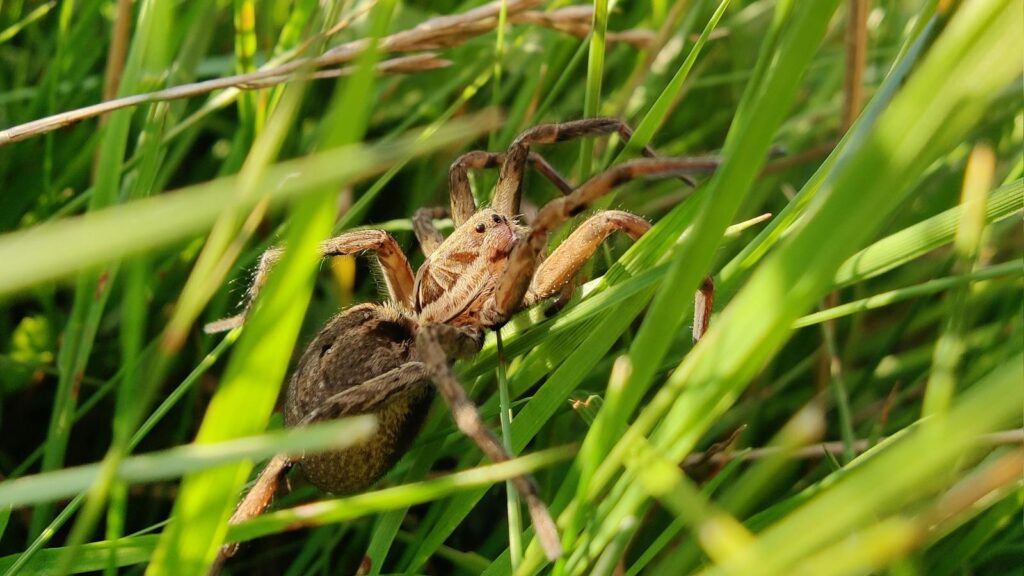
Scientists studying spider communication have developed innovative experimental techniques to decode the complex signals exchanged between these eight-legged communicators. Researchers use laser vibrometers to detect and measure the subtle web vibrations that human senses cannot perceive, allowing them to record and analyze the specific “vocabulary” of different spider species. In studies of visual communication, especially in jumping spiders, scientists have created spider robots or digital animations that can replicate specific movement patterns to test which elements of a courtship display trigger responses in potential mates. Chemical communication research often employs gas chromatography and mass spectrometry to identify the specific pheromone compounds that spiders use for different messages, sometimes synthesizing these chemicals to test spider responses in controlled conditions. These experimental approaches have revealed that spider communication systems are far more complex than previously thought, with some species using specific combinations of signals that function almost like a primitive grammar—where the meaning changes depending on the sequence and combination of different vibrations, movements, or chemical releases.
Evolutionary Advantages of Silent Communication

The silent communication methods evolved by non-venomous spiders offer significant survival advantages that have contributed to these arachnids’ remarkable evolutionary success. By communicating through vibrations, visual displays, and chemical signals rather than sound, spiders can exchange information without alerting nearby predators to their presence—a crucial advantage for creatures that are preyed upon by birds, reptiles, and larger insects. This silent communication also proves energy-efficient, with chemical signals and web vibrations requiring minimal energy expenditure while potentially transmitting information over relatively long distances or time periods. For predatory spiders, silent communication enables coordinated hunting without warning potential prey, allowing social species to organize ambushes or for individuals to signal territorial boundaries without broadcasting their location to potential meals. The development of these specialized communication channels has also reduced competition with other animals that communicate primarily through sound, allowing spiders to occupy a unique communication niche that experiences less interference from the acoustic signals that dominate many terrestrial ecosystems.

The communication methods of non-venomous spiders reveal a fascinating world of silent conversations occurring all around us. From the intricate vibrations traveling through silk webs to elaborate visual displays and invisible chemical trails, these arachnids have developed sophisticated ways to share information without making a sound. Their communication systems demonstrate remarkable efficiency and specialization, perfectly adapted to their ecological niches and evolutionary needs. As research continues to unravel the complexities of these spider “languages,” we gain not only a deeper appreciation for these often-misunderstood creatures but also inspiration for human technologies in areas like sensitive vibration detection, long-lasting chemical signals, and efficient information transfer. The next time you see a spider moving deliberately across its web or performing what seems like a strange dance, remember that you’re witnessing one small part of an ancient and complex communication system that has been refined over millions of years of evolution.
